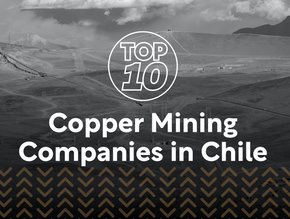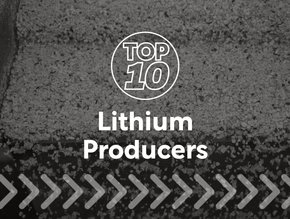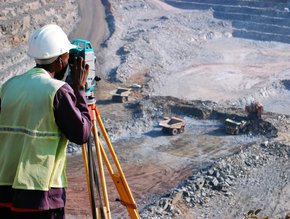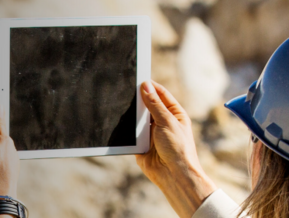Top 10 Mining Trends in 2021

Now in its 13th year, Deloitte's Tracking the Trends 2021 takes a look at the mining sector and factors for growth and improvement. Global mining professionals once again shared real-world case studies and practical examples that mining companies can leverage in building a path forward.
Tracking the trends 2021 looks beyond the pandemic and focusses on how the longer-term trends in the industry are impacted and what new trends are on the horizon. A central narrative emerged from this year’s report, namely the issue of trust between the mining industry and its wider set of stakeholders.
Here are the top 10 industry trends identified for 2021.
10: Meeting demand for green and critical minerals...
The conversion to renewable energy and electrification are central to the world’s clean energy future and the demand dynamics of mining are changing as a new range of commodities are sought. Miners need to plan strategically.
Moreover environmental activists are no longer operating in isolation. Investors, governments, and major corporations alike have taken up the gauntlet to reduce carbon emissions. Ramping up renewable energy generation is bound to heighten demand for nickel, cobalt, lithium, heavy rare earths, and copper.
When it comes to the critical and green minerals required for clean energy technologies, a commonly cited challenge revolves around potential supply shortages.
09: On the road to zero harm...
Safety, always central to mining, can be enhanced by new technologies and data. Wearable devices can provide protection and data, but an integrated approach to their use is needed. Safety analytics can predict potential harm and offer the means to prevent it.
The spread of COVID-19 may have smoothed the way for wearables by making people more comfortable with tracking and tracing mechanisms. However, wearables are likely just a first step.
To take this to the next level, mining companies would need to create programs designed to prevent safety incidents before they occur. The ability to pool data to drive increasingly complex analytics now makes it possible to move from historical safety analysis to predictive solutions, incorporating AI and other new technologies.
08: Advancing the future of work...
Digital transformation makes a new type of leadership possible and necessary. Leaders need to provide vision and purpose, empower people to think afresh, and collaborate across boundaries. A new inclusive culture of trust and respect is important.
To transition to a more integrated way of working, leadership should drive the evolution of the organization’s value system from being primarily compliance- and performance-based to encompass collaborative and systems-driven capabilities.
Mining is a talent-starved industry; these shifts in leadership and culture are key to retaining and building trust with the current and future talent that mining companies will rely on.
07: The path towards integrated operations...
Technological advances make organizational integration possible. Many miners need to clean up their data and integrate it across the value chain. Processes and workplaces should be reconfigured and an appropriate leadership and team culture established.
Digital initiatives and investments in automation have not yielded consistent results across the board. While some companies have realized widespread progress, others have experienced only incremental change.
Integrated operations provide a single source of truth built on real-time tracking of information. This positions companies to deliver step-change improvements in decision-making through advanced analytics, enable remote management of resources where feasible, and streamline workforce allocation and utilization.
06: Creating an agile supply system...
COVID-19 exposed supply chain and mining companies are now seeking to understand better their supply risks. More local sources are appealing, but the costs must be weighed and inventory management must also be examined.
The lack of visibility for some mining organizations to accurately trace their supply chain beyond their tier-one suppliers, heightened the risk of supply shortages and disruptions as COVID-19 spread across the globe.
Companies should create alternate - sometimes local - supply lines and reevaluate inventory strategies.
05: ESG: Corporate governance adding to competitive advantage...
Governance has been neglected in ESG but investors, customers, communities, and governments are now focusing on corporate behavior, human rights, ethics, diversity and changing social norms. Miners should step up.
Good governance is often seen as a way to protect against downside risk, but it can also be seen as adding to competitive advantage. Companies with strong governance systems make themselves more attractive to investors given ESG pressure, strengthen their attractiveness to host governments and communities, and also help to attract some of the best talent.
04: ESG: Working to overcome the social trust deficit...
High-profile disasters have tainted mining’s image and regaining social trust requires a collective effort. Miners should seek to create long-term socioeconomic benefits in communities, and sustainability is the new goal.
According to a recent report by the World Economic Forum, mining companies have acknowledged, for the second year running, that their single biggest risk is the trust deficit with local communities.
While in recent years efforts to tie investment to community impacts have seen the tide shifting, COVID-19 has made it clear that there is still some way to go, the report notes.
03: ESG: Getting serious about decarbonization...
Mining companies need to address decarbonization and meet their ESG commitments. Most need tools to improve their data on emissions throughout their supply chain and should work to benefit the communities in which they operate.
"Mining companies should recognize that there is a correlation between stakeholder sentiment and company valuation,” says Henry Stoch, partner, Risk Advisory and National Sustainability and Climate Change leader, Deloitte Canada. "Companies that fail to commit to a decarbonization agenda could find their share prices affected, which strengthens the case for decarbonization."
02: M&A in an altered world...
Many mining companies lost investor trust in the last mining cycle, in part because of highly priced M&A transactions that failed to deliver. Miners should consider embracing ESG, create shareholder value, and use M&A strategically, the report recommends.
To truly win back investor confidence, mining companies should strengthen their capital and operational discipline. Additionally, mining companies should undertake M&A transactions at no or low premiums, as opposed to the typical 30-50% ranges of the past.
ESG investing continues to be a major trend. According to a study released in January 2020 by the HEC Paris Business School, the Toulouse School of Economics, and MIT Sloan, investors are willing to pay US$0.70 more for a share in a company that donates at least one dollar per share to charity.
That trend has strengthened following the outbreak of COVID-19, as sustainable funds began to attract record levels of investment, with inflows rising to US$45.7 billion globally in the first quarter of 2020 alone.
01: Building resilience amid volatility...
While COVID-19 has had a range of impacts on mining companies, varying by commodity and geography, the one thing the past year has taught leaders is the value of building resilient organizations to navigate uncertain futures. Deloitte reported four hypotheses for future strategies.
The passing storm presumes that, after a slow start, the COVID-19 pandemic is met with an increasingly effective health system and a strong political response.
Good company presumes the COVID-19 pandemic persists past initial projections, placing a growing burden on governments around the world, which struggle to handle the crisis.
Sunrise in the east postulates that the COVID-19 pandemic is severe and unfolds inconsistently across the world. China and other East Asian countries manage the disease more effectively, whereas Western nations struggle with deep and lasting impacts.
Lone wolves posits that the COVID-19 pandemic becomes a prolonged crisis as waves of disease afflict the world for longer than expected, resulting in a growing death toll, social unrest, and economic freefall.
In assessing how these scenarios may play out, trust figures prominently. In many ways, an effective recovery hinges not only on citizens’ ability to trust in government, communities’ ability to trust in companies, and employees’ ability to trust in their employers’ leadership, but also on the trust of investors to deploy capital.






